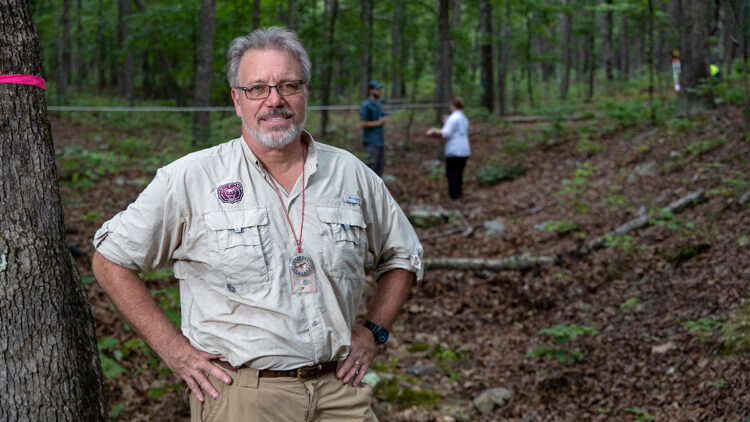The Ozarks region is known for its rich natural resources. Forests. Lakes. Rivers. Streams. And they’re all interconnected.
Proper management of these natural resources ensures they’ll be available for people to enjoy for many years.
Dr. Robert Pavlowsky, director of the Ozarks Environmental and Water Resources Institute and distinguished professor of geography at Missouri State University, is assessing the impact of prescribed burning in the Mark Twain National Forest.
The U.S. Forest Service contracted with the institute to see whether prescribed fires are increasing soil erosion and harming water quality in the area.
Pavlowsky and about a dozen students have been monitoring rainfall, soil conditions, runoff channels and water flow within the Big Barren River watershed in Mark Twain National Forest.
“So the question is,” said Pavlowsky, “does prescribed burning increase runoff from forest soils and cause more flooding and pollution downstream?”
Positive outcomes
Preliminary results indicate a small improvement in soil conditions one to two years after a burn, compared to unburned sites. This positive effect, in turn, leads to less runoff and soil erosion, and ultimately decreases water pollution in the watershed.
“We’re also looking at stream channels because they connect the forest areas, and what washes off them, to larger creeks downstream with year-round water and aquatic life,” said Pavlowsky.
While most of Pavlowsky’s research is on a specific waterway or area, much of what’s learned has broader implications.
“Our research findings get shared among other scientists and environmental managers, so it adds to our understanding of how watersheds and streams work so that we can better protect them,” said Pavlowsky. “A lot of what we’re finding out can be applied to other streams in the Ozarks.”


Leave a Reply